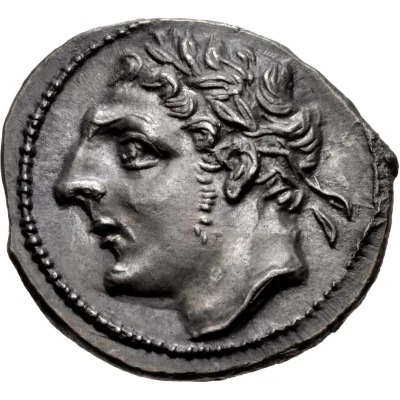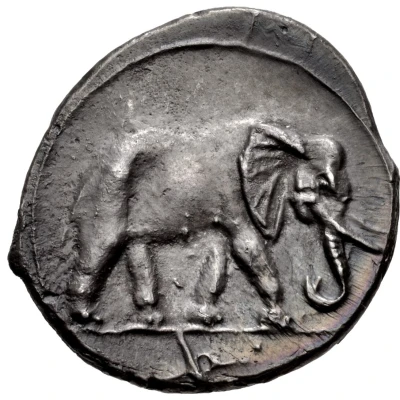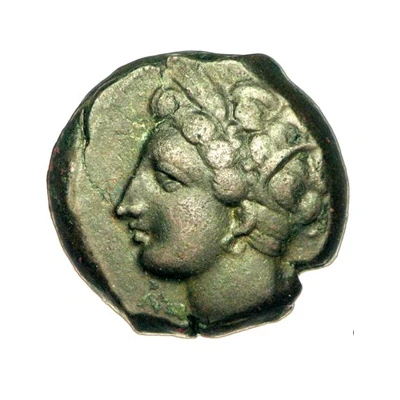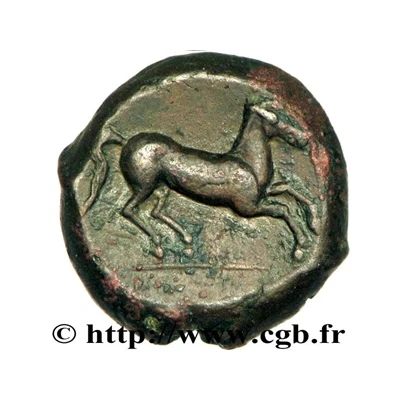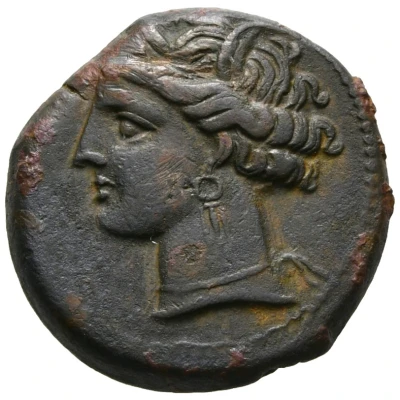
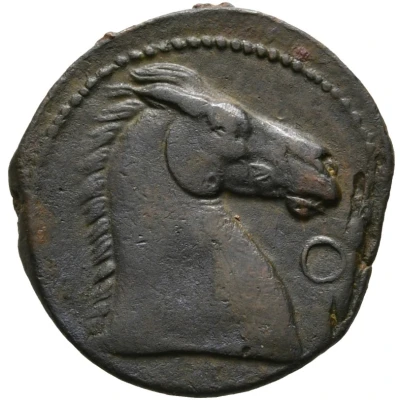

© H. D. Rauch
Diobol 300 BC - 264 BC
| Bronze | 4.21 g | - |
| Issuer | Carthage (Zeugitana) |
|---|---|
| Type | Standard circulation coin |
| Years | 300 BC - 264 BC |
| Value | Diobol (⅔) |
| Currency | Shekel |
| Composition | Bronze |
| Weight | 4.21 g |
| Shape | Round (irregular) |
| Technique | Hammered |
| Demonetized | Yes |
| Updated | 2024-10-09 |
| Numista | N#193388 |
|---|---|
| Rarity index | 85% |
Reverse
Horse head to right. Annulet in right field.
Interesting fact
The Diobol coin was used as a form of currency in Carthage during the 3rd century BC, and it was one of the first coins to feature a symbol of the state on one side and the head of a deity on the other. The Diobol coin featured the head of the goddess Tanit, who was a patron deity of Carthage, on one side, and a symbol of the city on the other. This design was unique for its time and reflected the influence of Greek coinage on Carthaginian currency.
